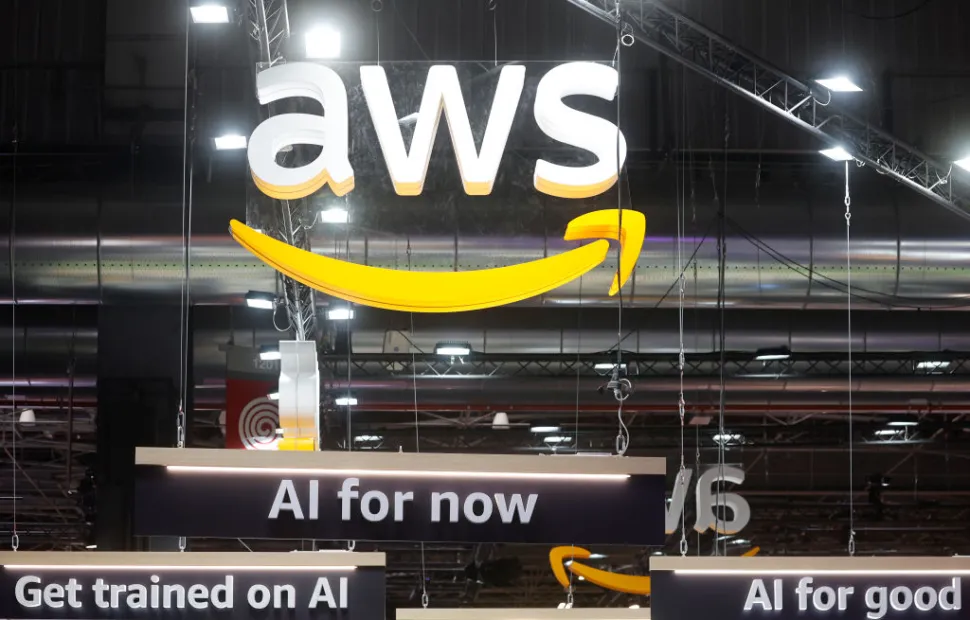Amazon Web Services Delivers $30.9 Billion in Q2 Revenue, But Faces Mounting Cloud Competition
Amazon Web Services Delivers $30.9 Billion in Q2 Revenue, But Faces Mounting Cloud Competition
By
Rachel Steinberg
Last updated:
August 1, 2025
First Published:
August 6, 2025

Getty Images
Amazon Web Services (AWS), the cloud computing arm of Amazon, reported a robust 18% year-over-year revenue increase in the second quarter of 2025, reaching $30.87 billion — slightly above Wall Street’s expectation of $30.8 billion, according to StreetAccount. While AWS continues to be a profit engine and the dominant player in the global cloud infrastructure market, intensifying competition from Microsoft Azure and Google Cloud is forcing Amazon to ramp up its innovation and infrastructure investments.
AWS Still Leads, But Competitors Are Gaining Ground
Despite AWS’s solid performance, Microsoft Azure and Google Cloud both posted faster growth rates this quarter, signaling a more competitive landscape in enterprise cloud computing.
- Microsoft: Azure and other cloud services reported 39% growth for the quarter, contributing to over $75 billion in total cloud revenue for the fiscal year ending June 30 — the first time Microsoft publicly revealed the size of its cloud business.
- Google Cloud: Alphabet’s cloud unit brought in $13.62 billion, a 32% year-over-year increase, far outpacing AWS in growth momentum, even though it remains smaller in absolute terms.
Amazon CEO Andy Jassy acknowledged this dynamic in the Q2 earnings call, noting,
“We have a meaningfully larger business in the AWS segment than others. I think the second player is about 65% of the size of AWS.”
AWS’s Profit Power Still Dominates
Even as growth cools slightly, AWS remains a key profit driver for Amazon:
- Operating income for AWS in Q2 reached $10.2 billion, making up more than half of Amazon’s total operating income of $19.2 billion.
- Although slightly below analyst expectations of $10.9 billion, AWS continues to deliver strong margins, reinforcing its importance to Amazon’s broader business.
AWS now contributes 18% of Amazon’s total revenue, making it the company’s second-largest business segment after its e-commerce operations.
Expanding Global Footprint and Customer Wins
During the quarter, AWS announced plans to launch a new cloud region in Chile before 2027 — part of a broader strategy to deepen its infrastructure in Latin America. It also landed a major multi-year cloud deal with PepsiCo, which will see the beverage giant move key workloads to AWS platforms.
These expansions reflect AWS’s strategy to stay ahead of competitors by ensuring regional data residency, latency benefits, and customized enterprise solutions for multinational clients.
Cloud Security Under Scrutiny Amid Hacker Threats
Security remains a critical differentiator for cloud providers. Following news that Chinese hackers exploited a vulnerability in Microsoft’s SharePoint Server, AWS emphasized its track record in cloud security and customer data protection.
Jassy remarked during the earnings call:
“For most companies, they’re putting data that they really care about in the cloud. The security and the privacy of that data matters a lot, and there are very different results in security in AWS than you’ll see in other players.”
This positioning comes as enterprise clients increasingly prioritize trust, reliability, and resilience in their cloud partners.
Challenges Ahead: AI Demand Strains Supply Chains
While the cloud business continues to thrive, AWS — like its competitors — faces capacity constraints as the demand for AI-driven computing infrastructure surges.
- Power availability is a growing concern. AWS CEO Jassy said the company is experiencing supply shortages, especially in energy resources required to power large AI workloads.
- Microsoft CFO Amy Hood echoed this, stating that AI-related capacity will remain constrained for the remainder of 2025, despite ongoing investments.
AWS, Microsoft, and Google are all investing billions of dollars in AI-specialized chips, data centers, and GPU clusters to address this bottleneck.
Outlook: AWS Must Balance Growth, Profitability, and AI Transition
While AWS still holds the top spot in global cloud services, 2025 marks a turning point where speed, security, and AI-readiness will likely determine the future hierarchy of the cloud market. Amazon’s ability to retain high-margin profits while accelerating AI infrastructure — all amid growing pressure from Microsoft and Google — will be crucial to its long-term dominance.
As the cloud industry becomes increasingly AI-centric, AWS’s next moves — from new service rollouts to infrastructure expansion and partnership deals — will be watched closely by investors, enterprises, and competitors alike.
Popular articles
Subscribe to unlock premium content
Disney’s Timeless Magic and How the Entertainment Giant Continues to Shape Culture and Innovation

Imran Khan’s Economic Missteps Amid Political Chaos in Pakistan

The Philippines’ Digital Shift How Remittances and BPO Are Fueling Growth

Disney’s Timeless Magic and How the Entertainment Giant Continues to Shape Culture and Innovation

Imran Khan’s Economic Missteps Amid Political Chaos in Pakistan

Disney’s Timeless Magic and How the Entertainment Giant Continues to Shape Culture and Innovation









